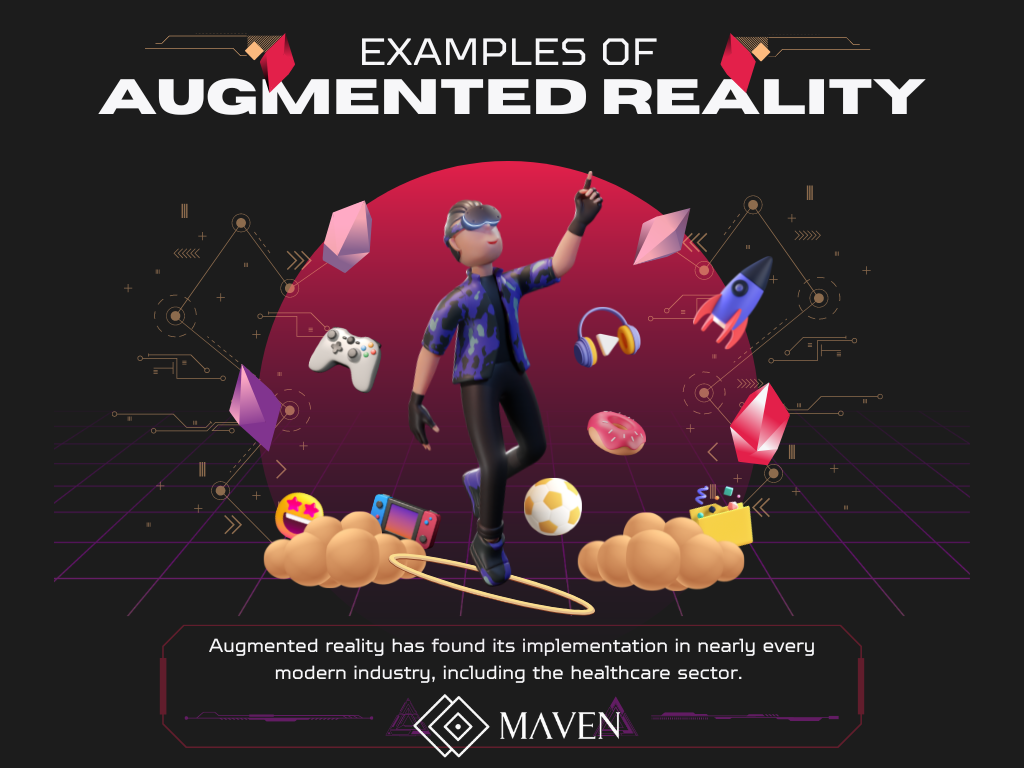Giants like Microsoft, Google, and others have been using Augmented Reality in their products. So, is it a good time for you to try to replicate their success?
We will get to the answer to this question in a minute but first, check out a few statistics.
AR mobile app market is worth 16.6 billion US dollars as of 2022. And a recent survey found that Generation Z buyers are the group most interested in AR shopping experiences.
Also, data showed that experts expect there will be 1.7 billion AR mobile devices globally by 2024.
All these numbers and data make it clear that augmented reality is the future. This article discusses eight examples of AR technology.
What are AR Apps?
An augmented reality app is a software app that supplements digital videos, audio, and other content into your real-world experience. These applications make you experience the integration of digital content and the reality of your surroundings.
‘Augere’ is a Latin word that means to increase or add, and it has given birth to the word ‘Augmented.’
Augmented reality practically adds a digital item to your physical surroundings. Having been named mixed reality, AR amplifies reality by supplementing virtual pictures on top of real-life objects.
1- Nintendo’s Pokemon Go App
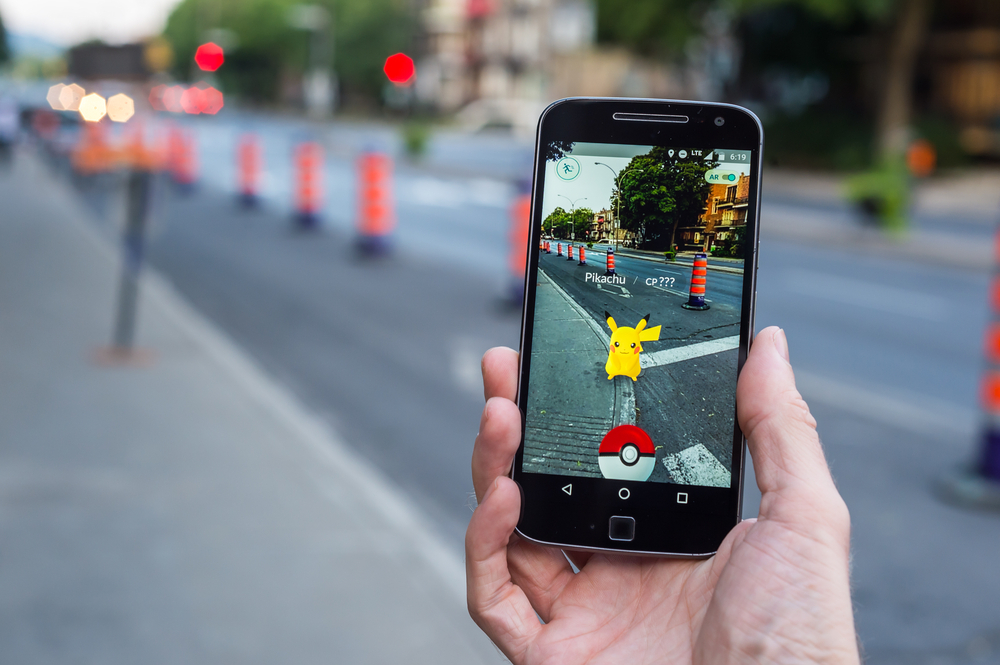
The list of augmented reality examples is incomplete without this game’s mention. Pokemon Go broke all records of popularity shortly after its release in 2016 and became everyone’s favorite on-the-go game.
Nintendo used Augmented Reality to augment a user’s real-life experience with cartoon characters superimposed on their surroundings.
You only need to open your camera within the pokemon app and start roaming around the streets while seeing the surroundings, like pavements, benches, and gardens, within the app’s experience.
Pokemon broke the notion that video games make people couch potatoes as you must walk around while playing this game to make your experience enjoyable.
Related Read: Difference Between Extended Reality and Augmented Reality
2- Loreal Makeup App
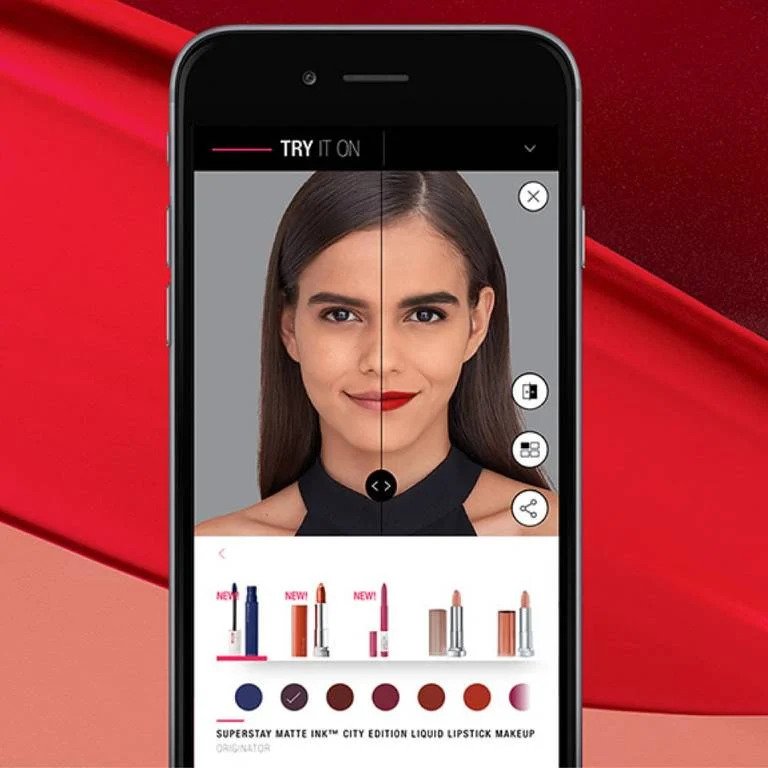
Ladies know that online shopping for cosmetics can go seriously wrong. You can see exactly the color of apparel and footwear but makeup is different. It looks different on everyone’s skin tone.
Loreal understood this and came up with a fabulous idea for a make-up app. It had already acquired ModiFace, the leading augmented reality company for the cosmetics industry by then.
Their makeup genius app shows customers their faces with various shades of lipstick when they open their front camera on their smartphones. The technology is currently only available for Amazon customers. AR makeup try-on provides realistic outcomes and automated shade calibration.
3- Snapchat
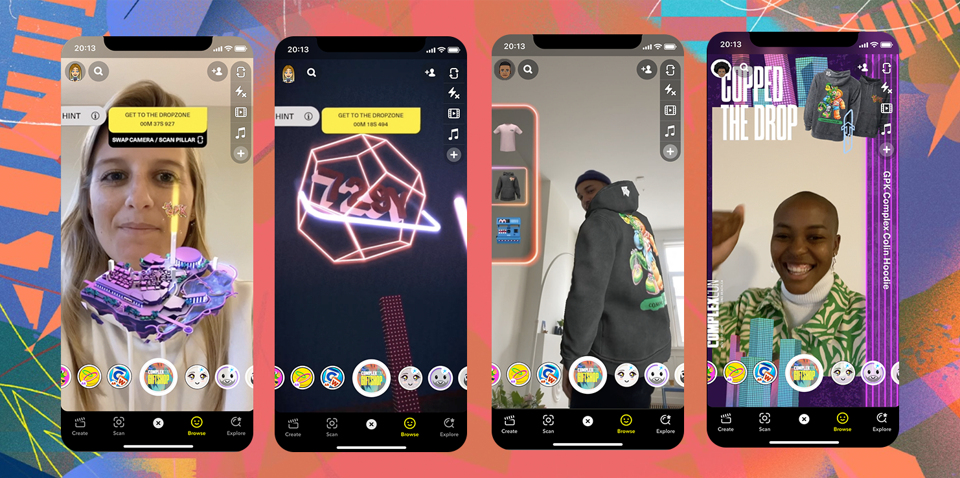
Launched in 2011, Snapchat has become an Instagram rival as the most loved social media app globally.
Most of us know about Snapchat's fantastic and fun filters, but few might have noticed them as great examples of augmented reality.
As people capture pictures with their loved ones, they can play around with the appearance of those images with a few taps. Snapchat first introduced ‘stories,’ which Facebook and Instagram later copied.
AR technology has allowed this social media app to become people’s first choice when traveling or commuting. More than 250 million people use Snapchat’s features that exploit augmented reality daily. After all, AR has been the heart of this offbeat social platform.
4- Tattoos Changing Colors
You might have seen online videos of body tattoos moving and changing colors. As you might have guessed, augmented reality is behind this magic.
You download software for augmented reality on your phone/laptop and create these videos. The software produces an algorithm in a manner that when your phone’s camera focuses on the tattoo, a color-changing and the moving video gets augmented on top of its surface.
The tattoo stays in the same color, but you see the video’s virtual photo that gets enveloped over the real-life item.
5- HoloLens
People marveled at this technology when it first arrived, as nobody had used augmented reality in such a brilliant way before.
Microsoft created the HoloLens tool to enable people to run their devices by viewing the screen hovering in front of them. It is a headset to offer an AR experience with transparent lenses.
It uses features, like head tracking, air tap, voice command, gesture command, and more to build an easy user-device interface. Microsft described HoloLens as a “fully untethered, see-through holographic computer.”
HoloLens exploits various “environment understanding” detectors, spatial mapping, and a depth camera.
6- Disney Coloring Book
The idea is still developing, but if it succeeds, it will help our children use their imaginative skills in far better ways. In 2015, Disney’s research team developed an augmented reality tool that projects cartoons from coloring books in 3D while someone is still coloring them.
Imagine how our kids will feel when they see the cartoon they are coloring, standing, and hopping on the book via a phone screen. It is called live texturing technology of AR characters.
7- IKEA Place App
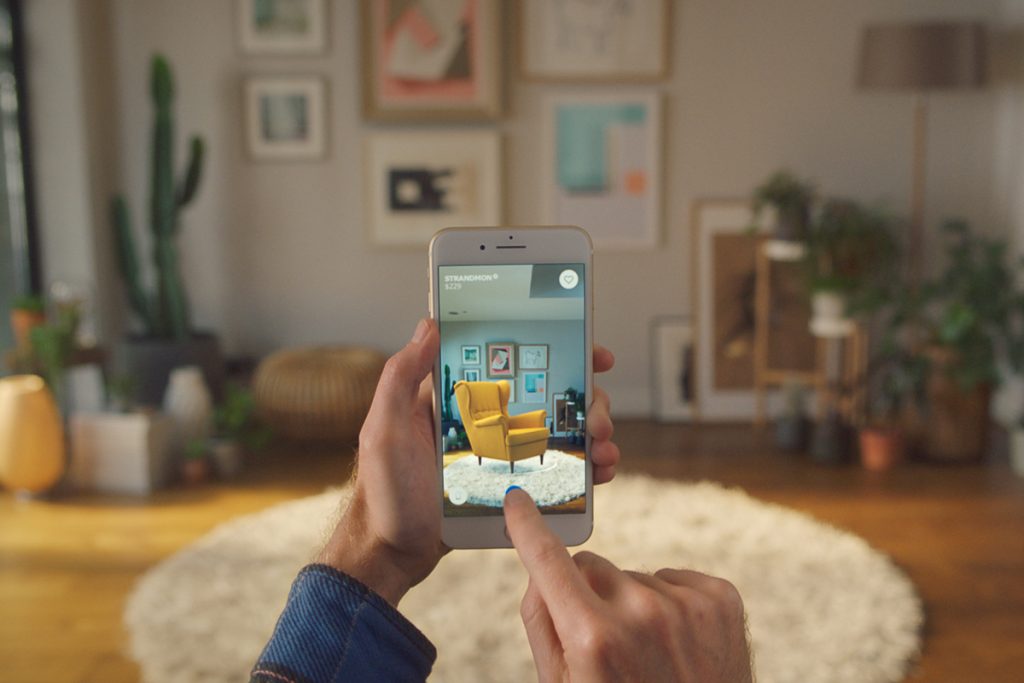
IKEA is not just famous for eccentric names of furniture that customers need to pull together themselves and inexpensive Swedish meatballs. The company allows buyers to view how cabinets and sofas will appear in several locations around their homes.
IKEA is a Swedish furniture and home decor retailer that started playing with AR in 2012, becoming one of the pioneers to utilize augmented reality.
The IKEA Place app is an enhanced version of the technology they offer. Shoppers can pick any furniture from the store’s directory and place it in their house to check whether it fits right and looks appealing.
Furniture is a high-end product, so we can’t take a risk while buying it. If a certain table or bed looks odd in your room, you can’t just chuck it out and buy a new one, similar to what we can do with clothes.
8- Google Pixel’s Star Wars Stickers
Ever wanted to grab a lightsaber and fight bravely with the evil forces like a Jedi? Well, Google has something for all Star Wars fans who own a Google Pixel 1 or 2 phones.
The animated and engaging star war AR stickers allow you to dress up like your favorite star war characters and combat stormtroopers. The pixel phone’s advanced cameras use augmented reality to make it happen. You can spend time with the droid shown in the movies R2-D2, BB-8, and Porgs.
Having copied the concept of Pokemon Go, Google has enabled consumers to add AR stickers to videos and images. Trigger created these AR stickers and developed them to engage with Google’s directory of AR stickers.
Related Read: What is Augmented Reality and How Does Augmented Reality Work?
Bottom Line
Augmented reality has found its implementation in nearly every modern industry, including the healthcare sector. Technology is assisting all kinds of businesses from industries to e-commerce to flourish beyond measures.
AR offers enhanced interaction, pleasant product experience, boosted sales, and thrived brand awareness to companies. We think the above examples are enough proof of how AR is helping giant companies to offer out-of-the-world digital experiences to their customers.
It's high time you see the revenue Augmented Reality can bring to your business and try to implement it in one of your offerings. Maven Digital builds functional and unique AR-driven apps for its clients. Get in touch today to have your dream app created!




